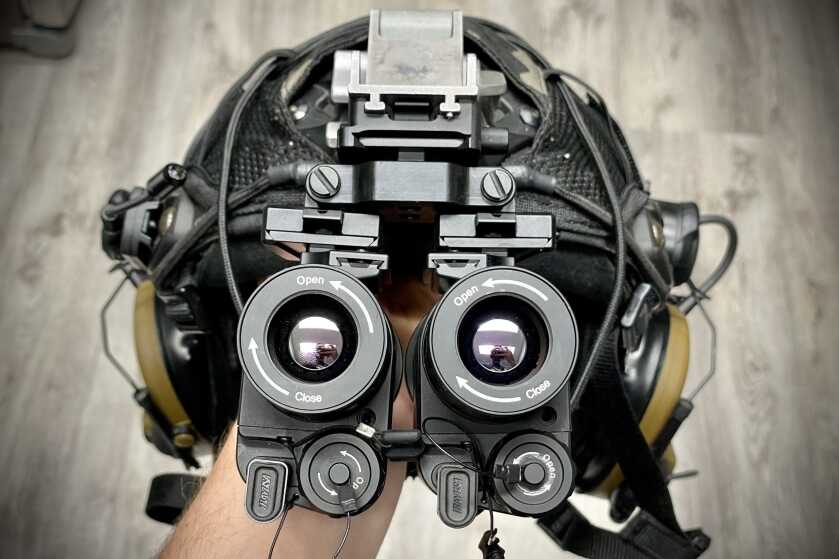
For those of you who know me, thermal has become a big part of my life and identity over the past five years. I use it consistently while giving it credit for my hunting success. When I have missed coyotes or pigs in the brush with night vision, thermal doesn’t let me down. While some thermal is better than others, the type of device makes a difference as well. While I have used thermal scanners, scopes, and binoculars, nothing is as convenient and easy to use as a helmet-mounted option. Coming in with a 12-micron core and a 640 sensor, the iRay MH25 packs a lot of punch for its size.
Specifications:
Device Technology: Thermal Imaging
Sensor Resolution: 640×512
Optical Magnification: 1X
Digital Magnification: 8X
Sensor Pixel Size: 12μm
Sensor Frame Rate: 50hz
Objective Focal Length: 25mm
Objective Diameter: 25mm
Objective F#: 1
Detection Range: 1375 Yards
Onboard Recording: No
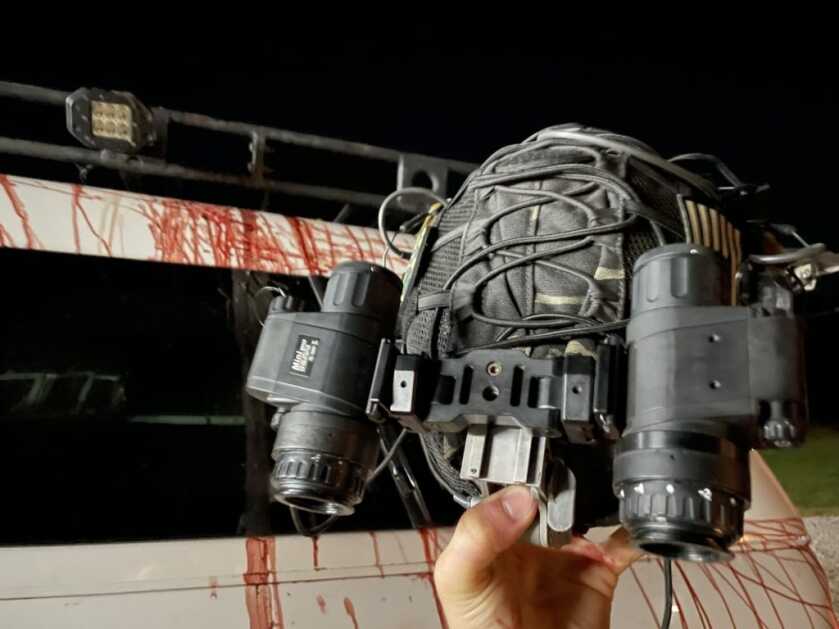
First and foremost, the iRay MH25 is compact and lightweight. This thermal monocular is 5.03″ long, 4.8″ tall, and 2.8″ wide while weighing in at a mere 9.3 oz which is basically the same size as a PVS14 (4.5″x 2.0″ x 2.25″ and 12.4oz respectively) and whole 3 ounces lighter. Size matters folks and this unit is a powerhouse for its small stature. While there aren’t many thermal devices that are made to attach to helmets, the MH25 is much lighter than other options I have tried and didn’t provide any neck strain when balanced with some extra batteries and a battery pack on the back of my helmet.
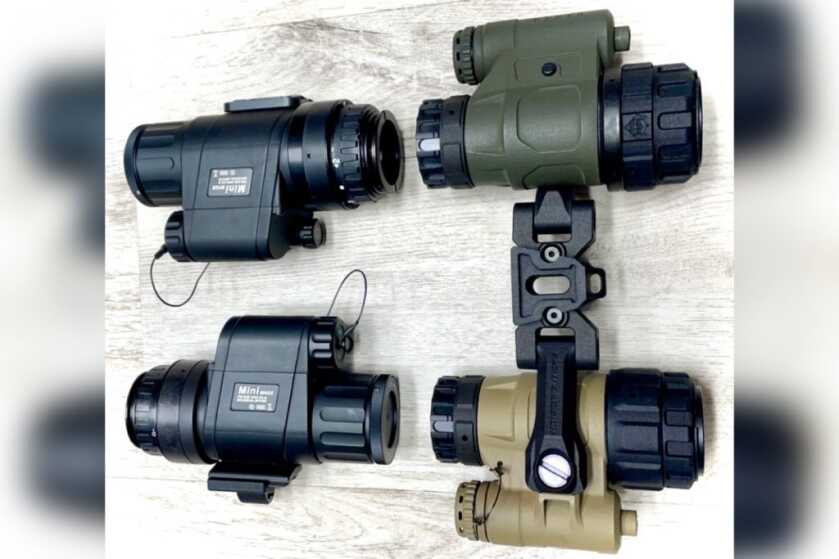
As I stated previously, I have used many types of thermals over the past few years, and having something mounted to your head is a huge perk. While handhelds are great for scanning when stationary, these can be difficult to use when driving through a bouncy field or running around. A handheld is always bouncing around in these situations making it hard to see through the device. However, when the thermal can be helmet mounted like the MH25, all this movement is directly translated to the helmet and through the device. Now when you go sprinting through a field, the thermal is bouncing with your eyes giving a very useable image, while also freeing up both of your hands. This has been a huge benefit and allowed me to sprint through fields chasing wild pigs with an AR10 in the dead of night. Now full disclaimer, navigation with thermal is tricky. I still recommend night vision for walking and driving since thermal doesn’t work through glass, or allow for great depth perception. I have stepped in multiple holes and even rolled my ankle trying to stalk up on pigs with helmet-mounted thermal. However, when hunting the detection thermal provides is unmatched and unbeatable.
The MH25 uses a dovetail which I have mounted to my ModArmory Integrated Components Night Vision Helmet Mount. This dovetail accepts Flir Breach adapters, or MUM-14 style accessories. Ultimate Night Vision also offers an Offset Mum Rail Adapter for the MH25 which works excellent when pairing with a second MH25, or when using one MH25 and a PVS-14 bridged together.
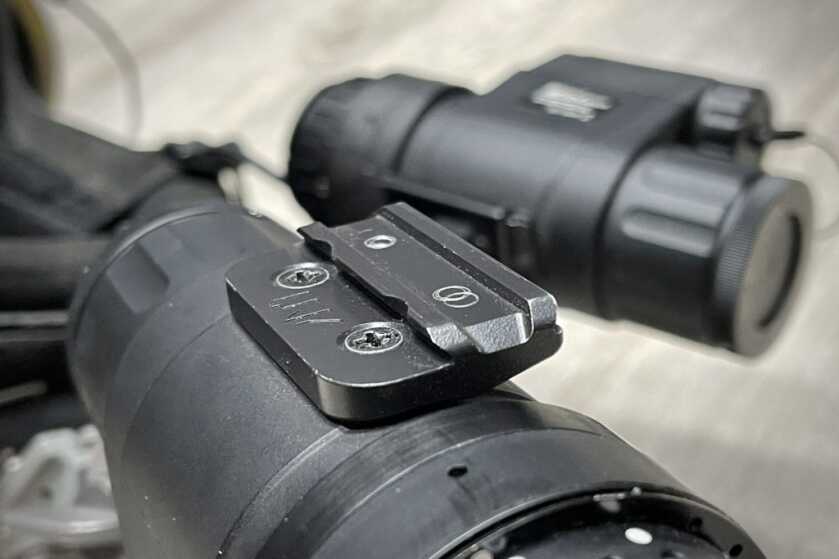
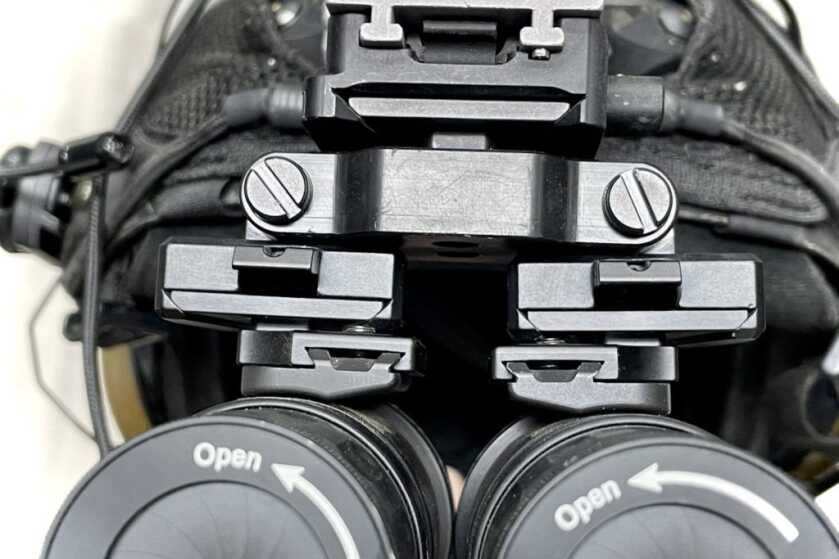
When it comes to thermals, everyone wants to know how clear they are. While there is no onboard recording for the MH25 to get good content from, I can say that it is a great image with a manufacturer-specified detection range of 1375 yards. I find this to be pretty accurate. I can see cows from about a mile away and have seen deer still glowing out to at least 1300 yards. While these are not identification ranges, the MH25 will let you know that there is something warm-blooded out there. Below is a screenshot from a video I took with my phone held behind the device so clarity is significantly reduced. This was taken from about 200 yards away from 6 wild pigs.


The iRay MH25 can be powered by a single CR123A which lasts about 1.5 hours, a 16650 battery with an included extension tube for about 3 hours, or externally with a power bank which is what I chose to do. Running a 10,400 mAh battery pack on the back of my helmet not only shifts more weight away from the front of the helmet to reduce neck strain but also provides serious run time. Thermals are notorious for draining batteries quickly, but by using only half of the storage capacity on my power bank, I can power two MH25s for around 5 hours. My hunts normally last around 4-6 hours so I never fully drained my battery pack, but assuming the led lights indicating its charge are accurate, that means each MH25 pulls around 550 mAh per hour so plan accordingly.
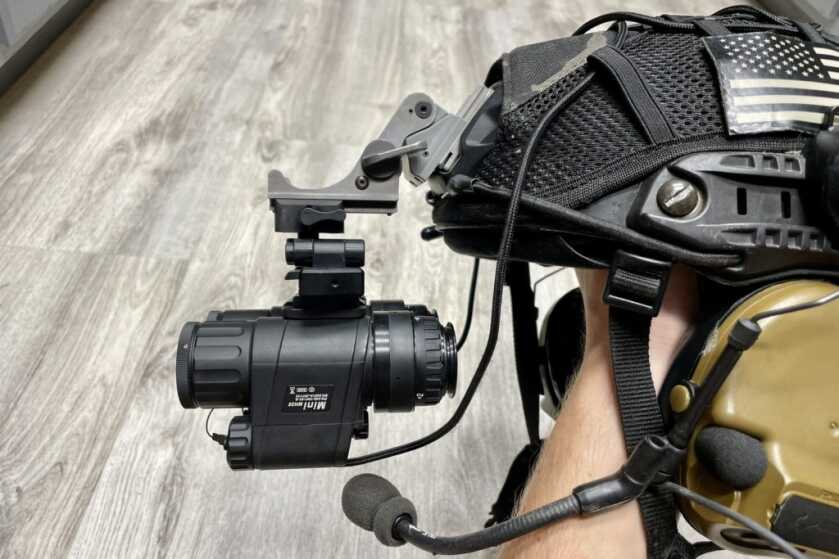
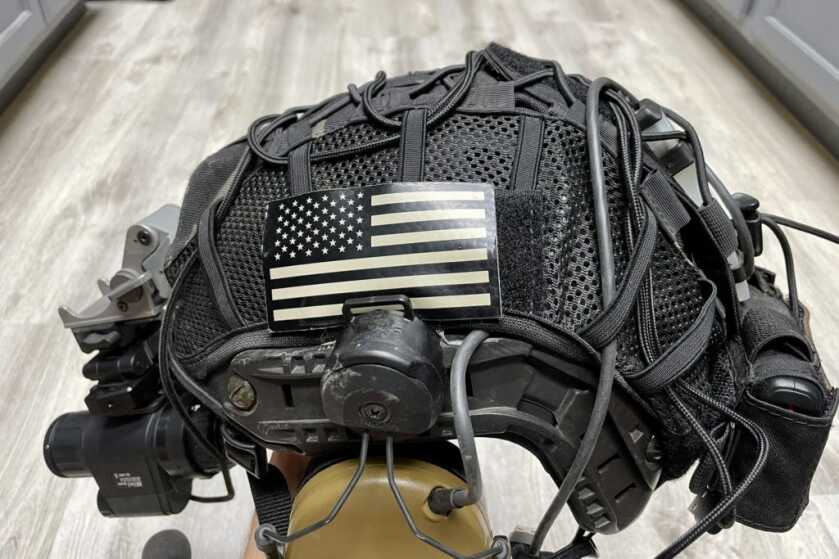
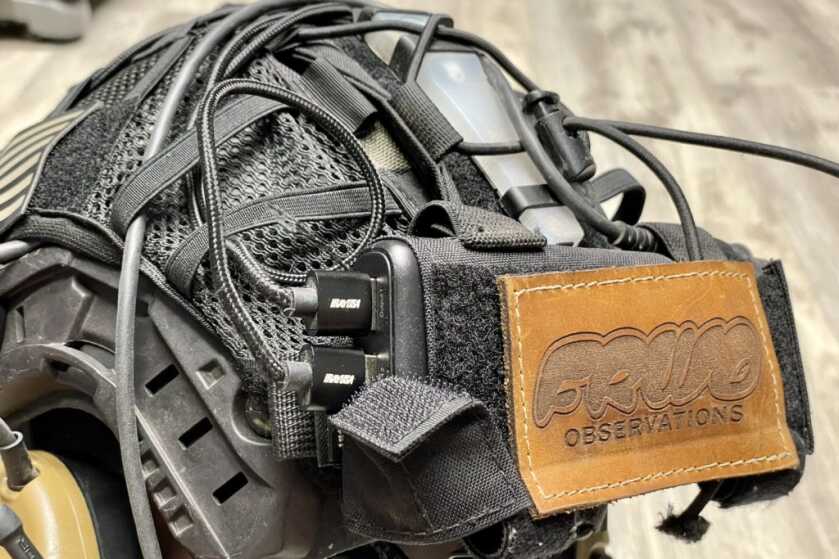
The MH25 includes an adjustable aperture lens to protect the lens from getting scratched or magnifying the sun’s rays to burn the internal sensors if left facing the sun during the day. This is a super neat feature, but I will say I had a couple of issues with it sticking. I am guessing I had some extra dirt get blown into the mechanism, but there were times when trying to open or close the aperture lens that the whole cap started to unthread from the objective lens.
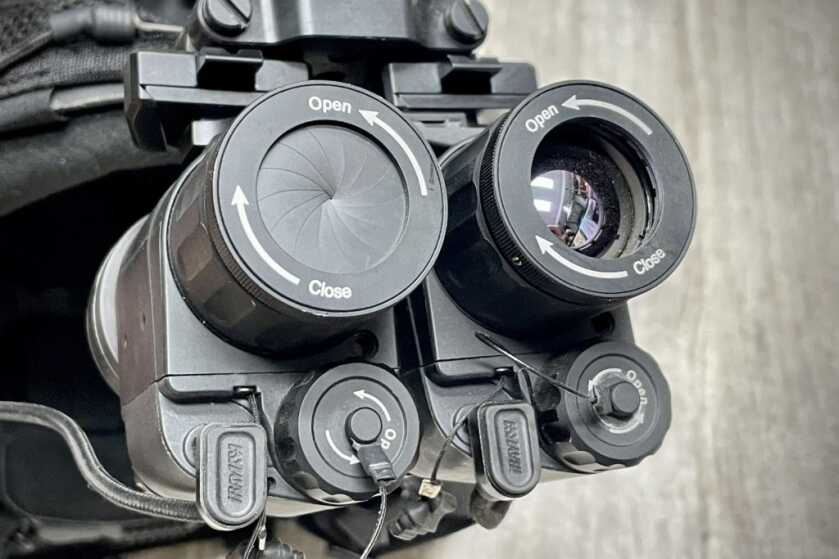
The actual focus for the device is comparable to a well-manufactured optical bell on a scope. There is a good amount of friction holding the focus where it was last tuned to, and when adjusting it rotates smoothly. This is quick and easy to adjust for looking at objects at different distances. I normally let things up close be blurry and set an infinite focus which shows everything clearly from about 15 yards and out.
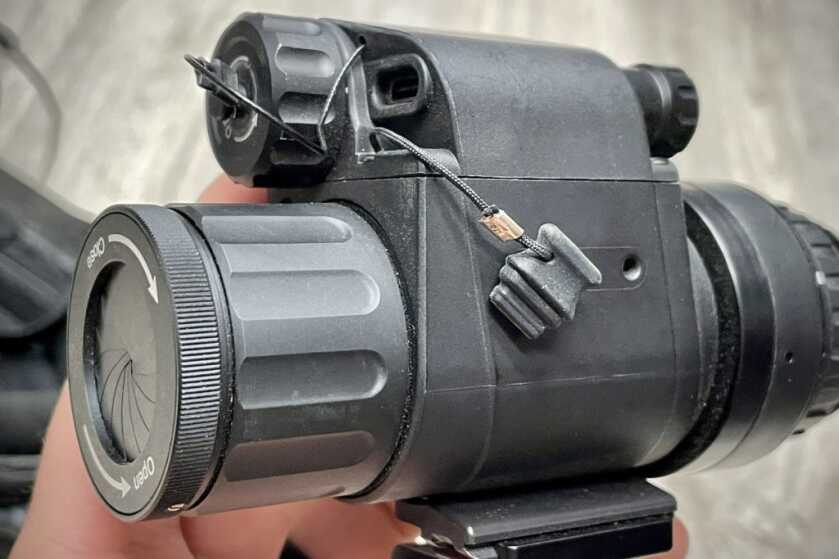
Ultimate Night Vision has been importing the iRay MH25s ever since they hit the US and made an adapter that allows this thermal to use a PVS-14 eyepiece which seriously helps when using helmet mounted. I have no experience with the MH25 without the PVS-14 eyepieces to compare to, but the image is not very big so it may be more difficult to use.
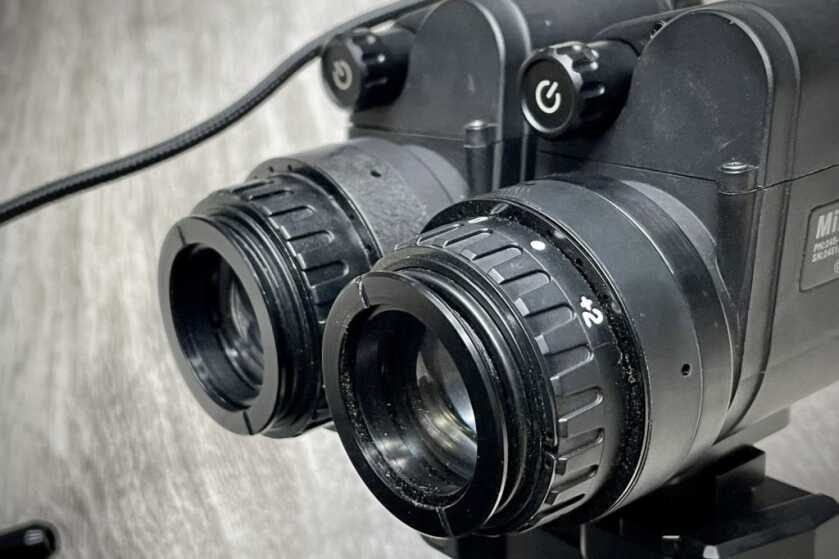
My biggest complaint about the MH25 comes from trying to use the menu system. While the buttons are easy to use and toggle through, the menu text is small and hard to read. My vision is pretty great, and I have never needed contacts or glasses, but it is not easy to be able to read the menu when trying to adjust contrast or other things. The MH25 also includes a built-in compass which is an awesome idea, but I had zero luck with it providing an accurate heading at all. Most of the time it was stuck saying I was facing west.
Once fine-tuned, the iRay MH25 is a powerful system. While dedicated thermal scopes or scanners with larger objective lenses are clearer, for the size, the clarity is amazing, and predator mode is activated when mounting the MH25 to a helmet. Dual MH25s are the bee’s knees, but one of these units still provides a powerful advantage. Two appear more clear than one and are a little easier on your brain since both eyes are basically seeing the same image. Running two MH25s on my helmet for around 60 hours between 12 nights out, I can say the advantage of helmet-mounted thermal is real. I detected wild pigs I would have never seen with night vision, and I was able to remain hands-free the whole time. The iRay MH25 has an MSRP of $3,999 and the PVS-14 eyepiece which increases eye box forgiveness runs $329 when ordering from Ultimate Night Vision. While not cheap, this setup is effective. Over the past three months, these MH25s have guided me to within 50 yards well over 100 wild pigs, helped me bag a Nilgai, and thwack multiple coyotes.


***Buy and Sell on GunsAmerica! All Local Sales are FREE!***



Made in CHINA!
I’m Out!
Do you run one power bank for both? Which one is it if there’s two ports or do you run a splitter?
Love my MH25 too by the way.
I don’t remember the brand name of the power bank, but yes I run both MH25’s from it. The power bank has two USB ports so I run two cords through the netting on my helmet up to the thermals.